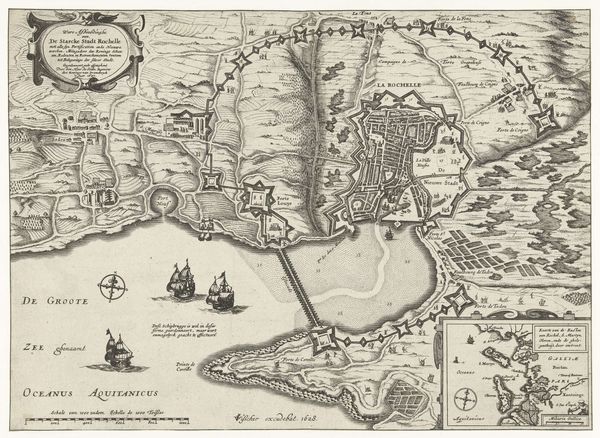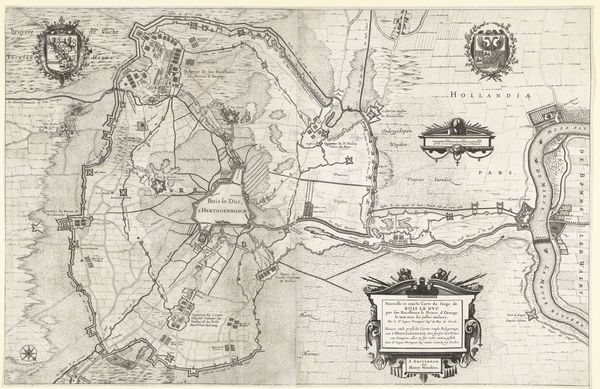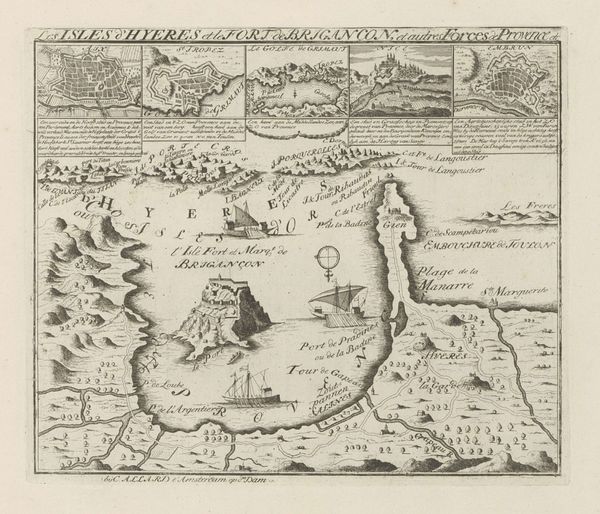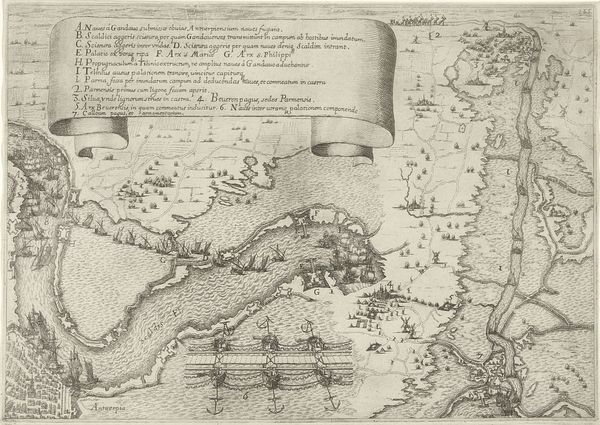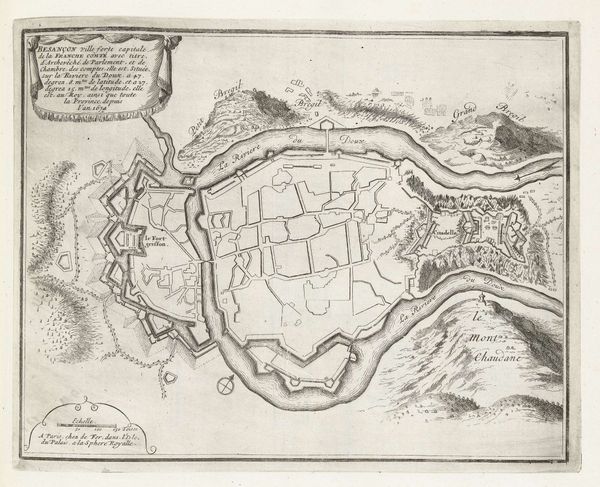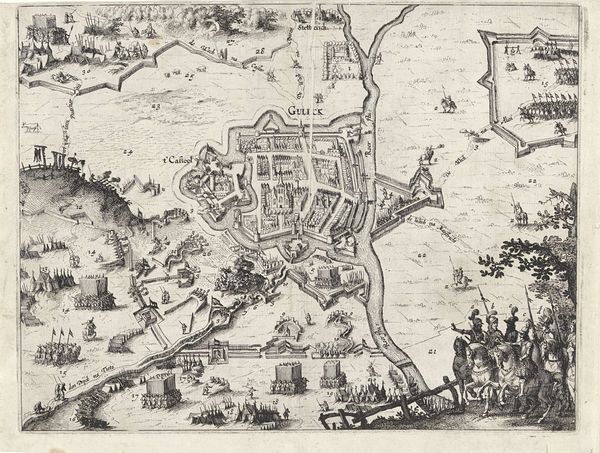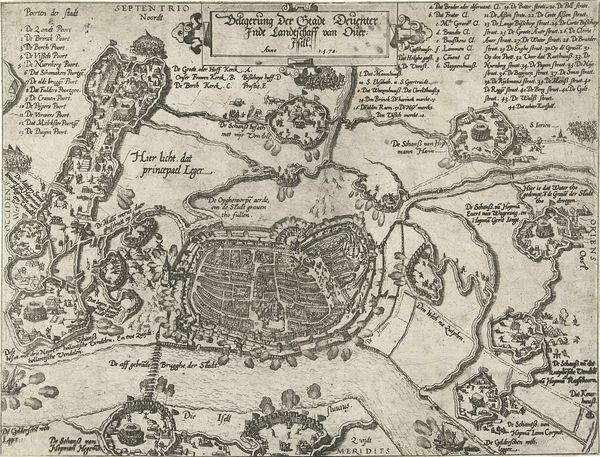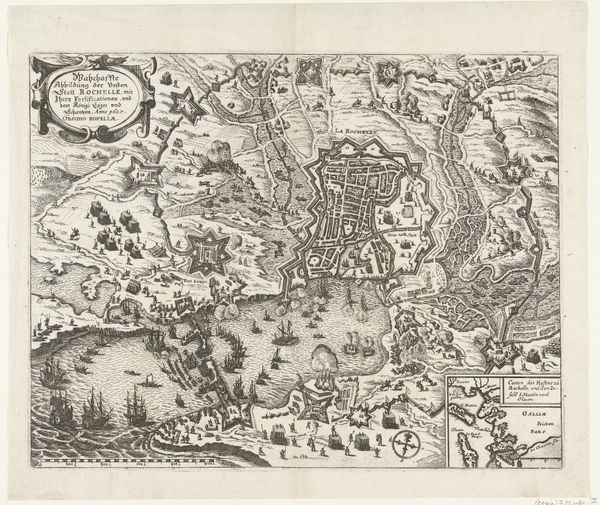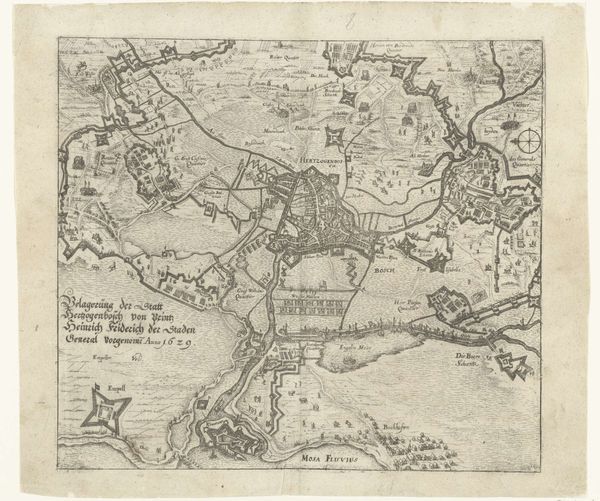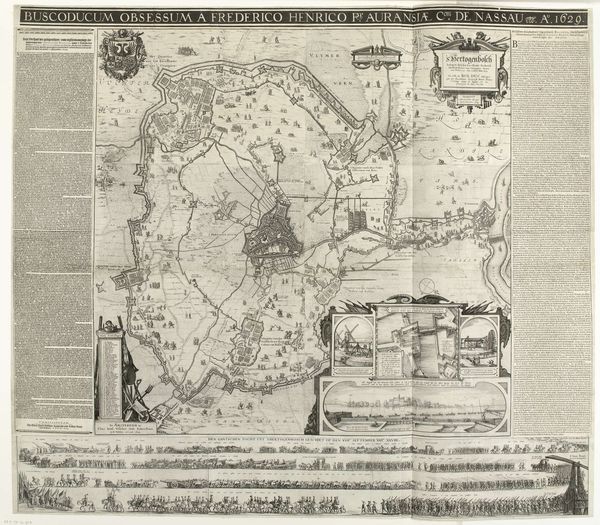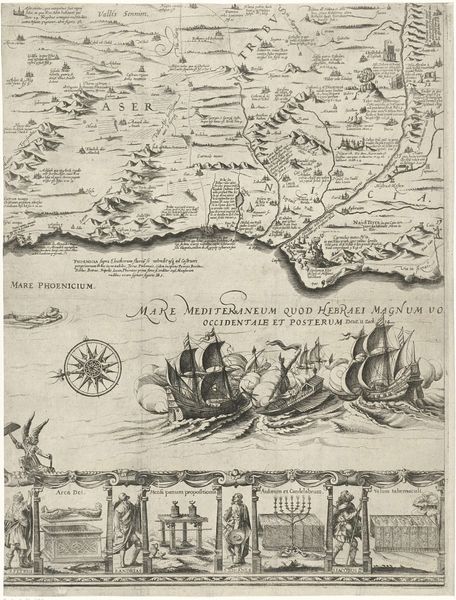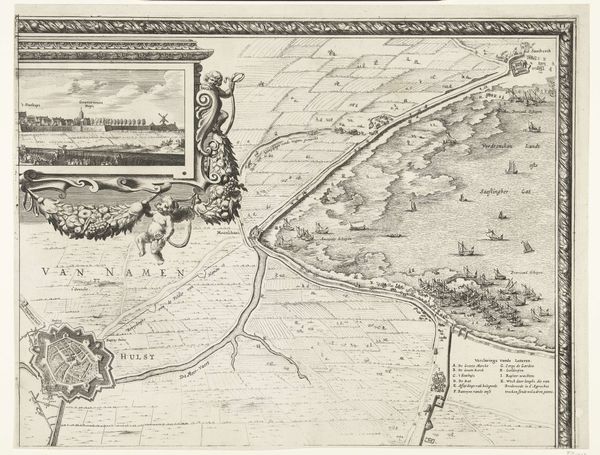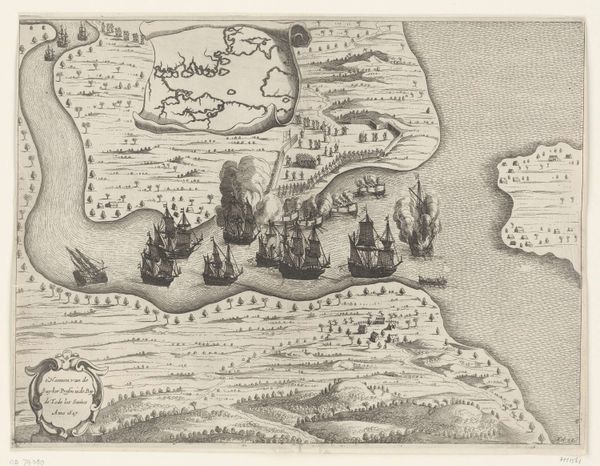
Grote kaart van het beleg van Den Bosch door Frederik Hendrik, 1629 1629
0:00
0:00
drawing, print, paper, ink, engraving
#
drawing
#
dutch-golden-age
# print
#
pen sketch
#
landscape
#
paper
#
ink
#
geometric
#
cityscape
#
engraving
Dimensions: height 760 mm, width 1085 mm
Copyright: Rijks Museum: Open Domain
Curator: Here in the Rijksmuseum, we’re looking at "Grote kaart van het beleg van Den Bosch door Frederik Hendrik, 1629," or "Large map of the siege of Den Bosch by Frederick Henry, 1629," a print made with engraving, paper, and ink by Claes Jansz. Visscher. Editor: It strikes me as surprisingly elegant, given the brutal reality it depicts. There's almost a decorative quality to the meticulous detail. But then you start thinking about all the lives represented by those tiny, precise marks. Curator: Precisely. Visscher produced this map to chronicle the Siege of 's-Hertogenbosch, a pivotal moment in the Eighty Years' War. This military campaign played out during the summer of 1629, resulting in the city's capitulation to the Dutch Republic. Maps like this one played a vital role, becoming tools of propaganda to display the power and prestige of the Dutch military and leadership. Editor: So, it’s less about geographical accuracy and more about projecting an image of Dutch dominance. Were these maps accessible to the public? Did ordinary citizens have any interaction with this kind of art? Curator: Indeed. Although the details might not have been wholly accurate for navigation, their cultural and political impact cannot be disregarded. Dissemination of images like these certainly shaped public perception, and in many ways became the CNN of the era, spreading not news, but a version of it crafted through the lens of the powerful. Editor: You know, looking at this through a modern lens, the glorification of conflict makes me uncomfortable. Yet it's fascinating how art has historically served the purpose of shaping narratives and cementing power. Can we truly disentangle art from politics? Curator: It’s a perpetual challenge, isn't it? But recognizing the inherent biases and political contexts within which art is created helps us see it with fresh eyes. By acknowledging the complexities of its time and implications in shaping perceptions, a deeper connection is created. Editor: Agreed. Analyzing Visscher's map reminds me that what is seen as objective history is very often subjective in its creation, circulation, and influence. The power to depict is the power to shape perception. Curator: It highlights how understanding the intersection of art and its broader social context can allow you to have an improved understanding of historical events and the subtle, pervasive forces that shaped society in those moments.
Comments
No comments
Be the first to comment and join the conversation on the ultimate creative platform.
